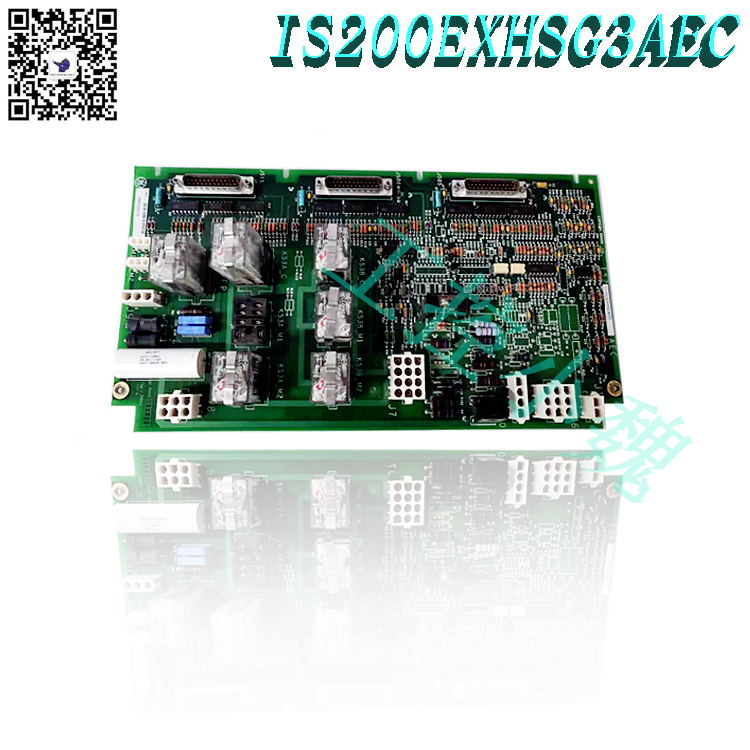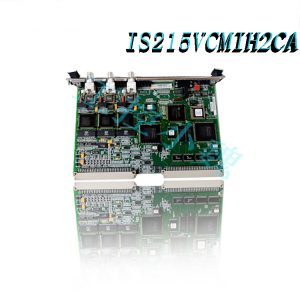Description
IS200VCRCH1ABA – Input/Output Board is available in stock which ships the same day.
IS200VCRCH1ABA – Input/Output Board comes in UNUSED as well as REBUILT condition.
To avail our best deals for IS200VCRCH1ABA – Input/Output Board, contact us and we will get back to you within 24 hours.
The IS200VCRCH1ABA model is one of the Mark VI terminal boards produced by General Electric; this model is often described as a single-slot VCCC board. The VCRC board has the same functionality as the VCCC board, except contact input cables will plug into the front of the board.
Functional Description
IS200VCRCH1ABA is a Input/Output Board developed by GE. It is part of the Mark VI series. VCRC board serves as a compact and space-efficient alternative to the VCCC, offering identical functionalities while introducing some structural and connectivity differences. The board mirrors the functionalities of the VCCC, providing the same capabilities and handling of input signals within the system. It performs tasks such as signal isolation, sampling, and transfer, ensuring seamless communication between modules.
Features
Form Factor and Design: Single-slot version of the VCCC, designed to occupy a solitary VME slot without requiring an additional daughterboard. This design minimizes the space needed within the rack while maintaining the core functionalities.
Connectivity Features: Front Panel Connections: Contact input cables directly plug into the front of the board, providing a more accessible and front-facing connectivity option compared to the VCCC. This setup facilitates easier cable management and access during installation or maintenance procedures.
Input Connectors: Features two front panel connectors, J33 and J44, specifically designated to accept contact inputs originating from the TBCI (Terminal Board for Control Inputs) terminal boards.
Relay Output Connectivity: Relay outputs on the TRLY module connect to the J3 and J4 ports on the VME rack. This uniformity in relay output connectivity ensures compatibility with both VCCC and VCRC setups.
No Daughterboard Requirement: Doesn’t necessitate a daughterboard for its operations, reducing its footprint within the system and optimizing slot utilization in the VME rack.
Limitation Regarding TICI Board: Notably, the board does not support the TICI (Terminal Input Contact Input) contact voltage sensing board. Therefore, if utilizing the TICI board is a requirement, the VCCC would be the recommended choice instead of VCRC.
Fault Detection Mechanisms
Loss of Contact Input Excitation Voltage: Detection occurs when there’s a loss of excitation voltage powering the contact inputs. This fault detection ensures the continuous monitoring of essential input voltage levels.
Non-Responding Contact Input in Test Mode: Detection flags a non-responsive contact input specifically during test modes, ensuring the functionality and responsiveness of the input system.
Loss of User Solenoid Power (Blown Fuse): Detection occurs when there’s a loss of power to user solenoids, typically due to a blown fuse. This fault detection safeguards against potential disruptions in the power supply to user solenoids..jpg)
Coil Current Discrepancy with Command: This detection mechanism identifies discrepancies between the commanded coil current and the actual current, ensuring precise control and operational consistency.
Relay Contact Voltage Monitoring Indicating a Problem: Fault detection triggers when monitoring relay contact voltages indicates any irregularities or inconsistencies, flagging potential issues within the relay contacts.
Unplugged Cable or Loss of Communication with I/O Board: Fail-safe mechanisms de-energize relays if communication is lost between the VCCC/VCRC board and the associated I/O board. This ensures system safety in the event of communication disruptions.https://www.weikunfadacai1.com/
Failed ID Chip: Detection signals a fault in the ID chip, used for board identification and information retrieval. A failed ID chip triggers a fault notification, ensuring proper board identification and compatibility.
These fault detection mechanisms within the board play a pivotal role in maintaining system reliability and safety. By promptly identifying potential issues such as power loss, communication disruptions, or component failures, these mechanisms ensure swift resolution and prevent system malfunctions or unsafe operational states, contributing significantly to the overall stability and dependability of the system.
The IS200VCRCH1ABA model is described as a Discrete Input/Output module. It was produced by General Electric to operate in the Mark VI series. The VCRC model has an alternate board; the alternate board is known as a VCCC board. The VCRC board has the same functionality as the VCCC board; one minor difference between the two models is contact input cables; the contact input cables on the VCRC board will plug into the front of the board. Another difference between the IS200VCRCH1ABA model and the VCCC model is that the VCRC model is considered a single-slot version of the VCCC board.
When the model is being operated, the input/output (I/O) signal types used with this model are solenoid and dry contact relay outputs and contact inputs. There are 48 contact inputs per processor, with twenty-four outputs between the dry contact relay and solenoid outputs, twelve for each output type. There are two different associated terminal boards for the inputs and outputs on the IS200VCRCH1ABA model; the associated board used with the outputs is the TRLY board, and the board used with the inputs is the TBCI board. When the terminal boards are used with the VCRC board, they will connect to the model through the J3 and J4 connectors located on the front faceplate of the unit.
It should be noted that while the IS200VCRCH1ABA model has the same functionality as the VCCC model, it cannot be used with a TICI contact voltage sensing board like the VCCC unit can. For more information on what other Mark VI boards can be used with the VCRC unit, refer to the GEH-6421 Mark VI Turbine Control System Guide Volume II..jpg)
Frequently Asked Questions
What is IS200VCRCH1ABA?
It is a Input/Output Board developed by GE under the Mark VI series.
What purpose do the ID devices on cable connectors serve on the terminal board?
Each cable connector on the terminal board features an ID device that holds specific identification information. These ID devices are read-only chips containing crucial data such as the terminal board’s serial number, board type, revision number, and the specific JR, JS, and JT connector locations.
How are these ID devices utilized within the system?
The I/O processor interrogates these ID devices, retrieving encoded information about the terminal board. This information includes critical details such as serial numbers, board type, and connector locations.
What happens if a discrepancy is detected while reading the ID chip?
If the data read from the ID chip by the I/O processor doesn’t match the expected or configured information, it signals a mismatch. This discrepancy triggers a hardware incompatibility fault within the system.
What type of model is the IS200VCRCH1ABA?
The IS200VCRCH1ABA mode is a Discrete Input/Output Terminal Board. The model is used to accept a variety of inputs and can control up to twenty-four relay outputs from four of the attached daughterboards. Some of the daughterboards that can be used with the VCRC model are the TRLY and TBCI boards. Refer to the attached GEH-6421 manual for more information on the function of this unit.
How many channels in total does the VCRC model have?
In total, between the four daughterboards, there are seventy-two channels. There are forty-eight dry contact voltage input channels with twenty-four per terminal board and twenty-four output channels with twelve relays per terminal board. The daughterboards used with the VCRC unit are TBCI and TRLY boards.
What are the three LEDs on the IS200VCRCH1ABA model?
The LEDs on the IS200VCRCH1ABA model are RUN, FAIL, and STATUS. When indicating that the board is functioning as normal, the RUN LED will flash green. If the VCRC model is not running properly or is malfunctioning, the FAIL LED will be a solid red. The STATUS LED on the VCRC board is normally off, but if, at any point, a diagnostic alarm condition occurs on the board that the LED will display as a steady orange.
Reviews For IS200VCRCH1ABA
While the VCRC board can be used almost the same as the VCCC board, there are some limitations. One of the primary limitations is that the VCRC board cannot be used with a TICI board like the VCCC model can. While the IS200VCRCH1ABA model cannot be used with some of the models that the VCCC unit can be used with it is a smaller model which makes it more efficient if the user would prefer a more compact unit.
Popular models:


-300x300.jpg)

Reviews
There are no reviews yet.